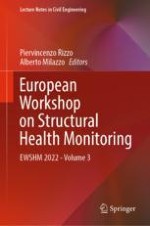2023 | OriginalPaper | Buchkapitel
A New Unsupervised Learning Approach for CWRU Bearing State Distinction
verfasst von : Xiao Wei, Tingsheng Lee, Dirk Söffker
Erschienen in: European Workshop on Structural Health Monitoring
Aktivieren Sie unsere intelligente Suche, um passende Fachinhalte oder Patente zu finden.
Wählen Sie Textabschnitte aus um mit Künstlicher Intelligenz passenden Patente zu finden. powered by
Markieren Sie Textabschnitte, um KI-gestützt weitere passende Inhalte zu finden. powered by
